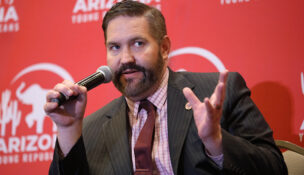KidsCare advocates seek private money as legislators consider possible cuts
Arizona Capitol Reports Staff//November 14, 2008//[read_meter]
KidsCare advocates seek private money as legislators consider possible cuts
Arizona Capitol Reports Staff//November 14, 2008//[read_meter]
Advocates of the state’s health care program for children plan to offset expected cuts at the state level by turning to the private sector to raise resources needed to keep...
No tags for this post.

















